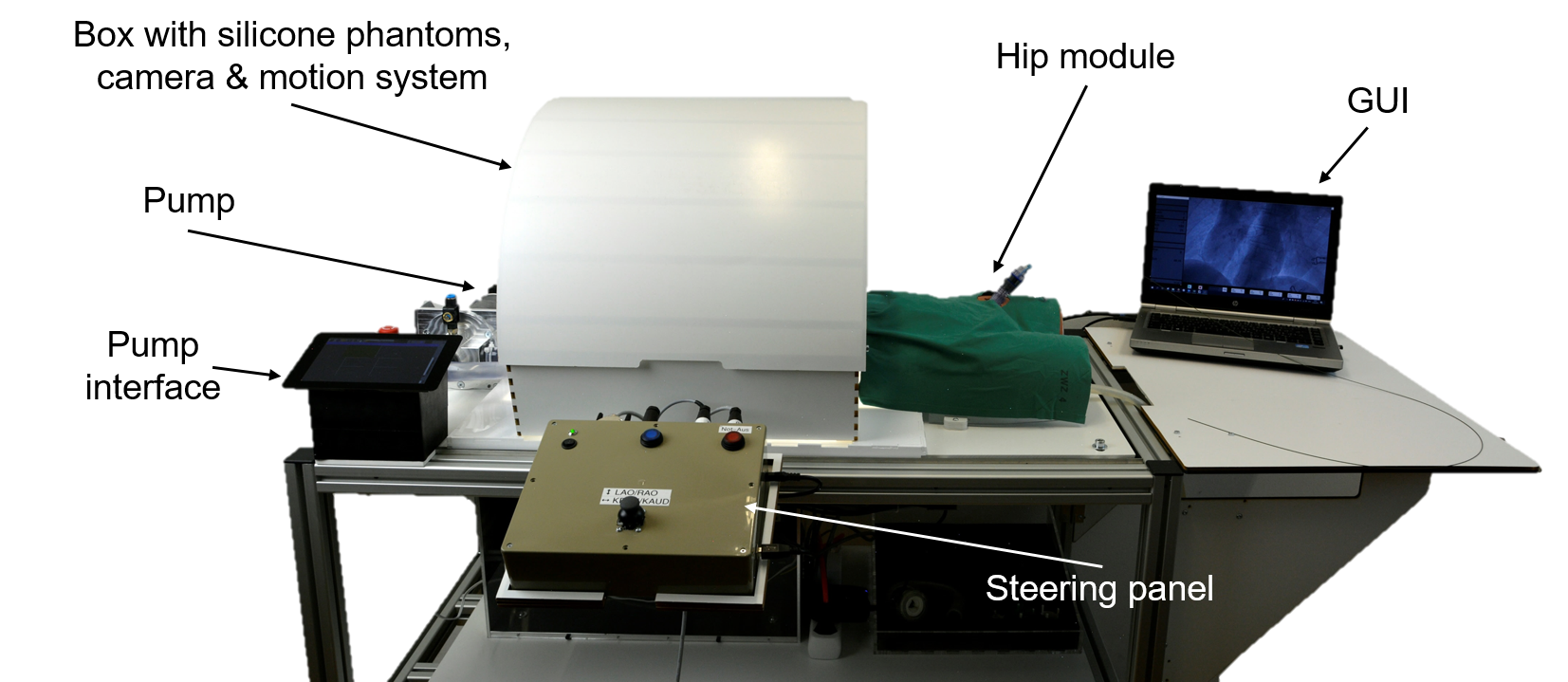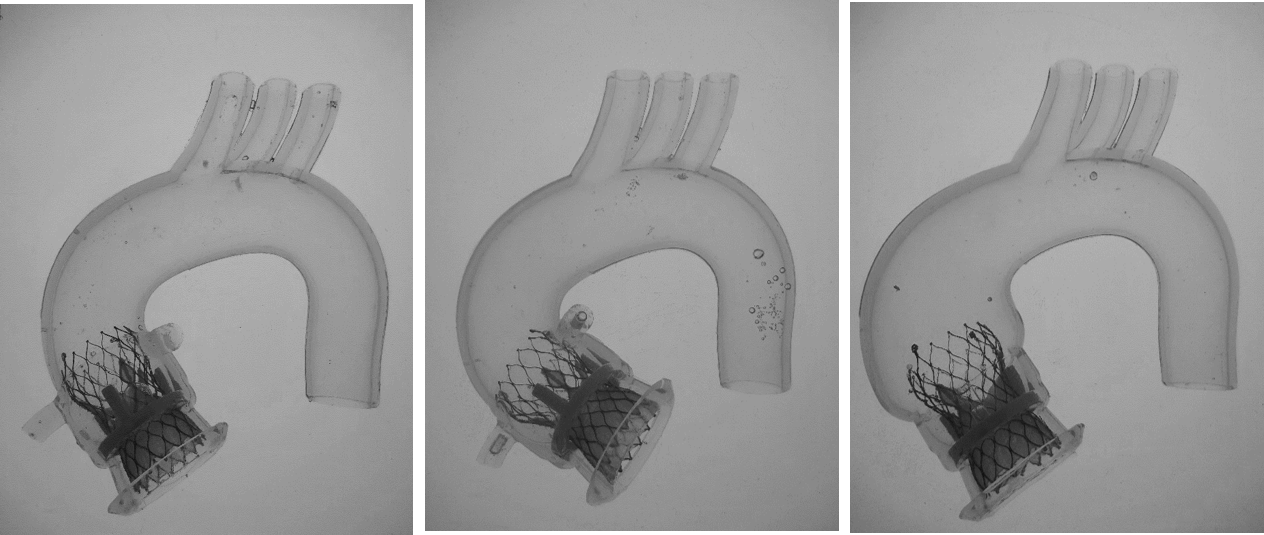TAVI Simulator
Realistic simulators are crucial for simulation-based training in cardiovascular interventions. One of the most frequently performed interventions in this field is the transcatheter aortic valve implantation (TAVI). During the TAVI an artificial aortic valve is implanted using a catheter. Usually, the catheter is inserted into the artery in your groin and is then advanced to the heart. During this process, the surgeon has no direct vision and therefore guides the catheter with the use of fluoroscopy (X-Ray).

In close collaboration with Prof. Maisanos Group from the USZ we iteratively developed a simulator where surgeons can be trained and educated in the TAVI procedure (see Fig. 1). The TAVI simulator provides a realistic handling of all the tools and in combination with direct feedback offers a great training experience.

By the use of modular silicone phantoms for the left ventricle, the aortic valve and the aortic arch various training scenarios can be simulated. The phantoms are injection molded as depicted in Fig. 2 They can easily be exchanged to create a new training scenarios. Depicted in Fig. 3 are the implanted artificial aortic valve in three different silicone phantoms.

In a next step we aim to validate the TAVI simulator in collaboration with the USZ to ultimately deploy it as a training and educational platform.
